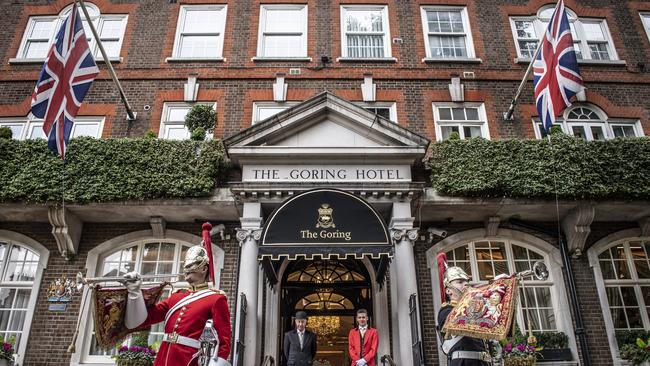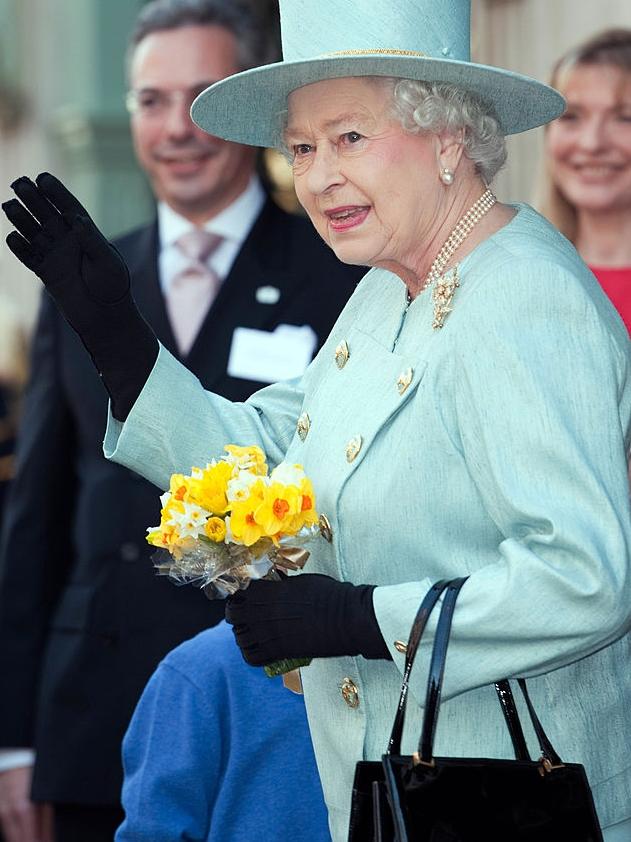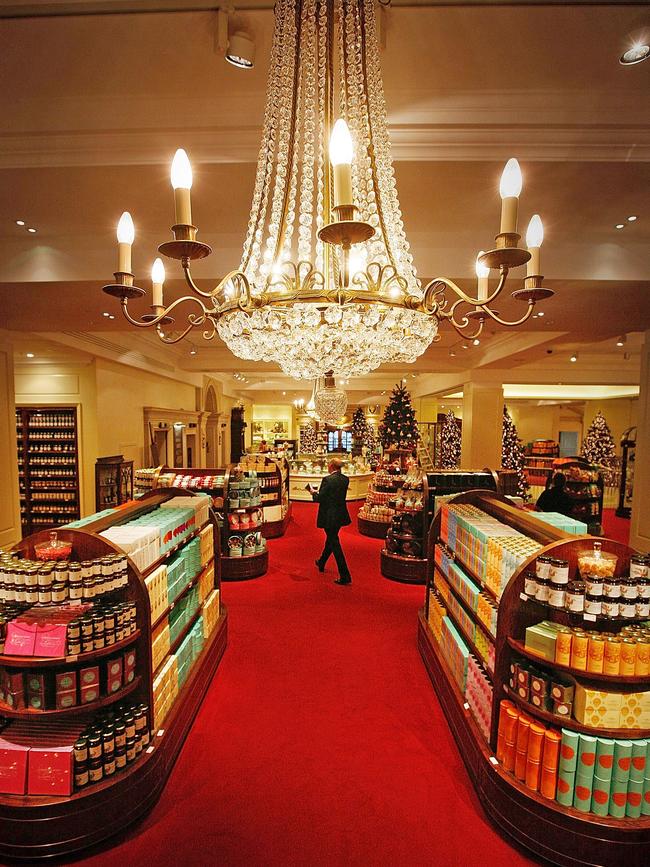London establishments with the royal stamp of approval
Over the years, Queen Elizabeth II singled out select British businesses as best in class. Here, a guide to six HM-approved spots in the capital.

The late Queen Elizabeth II might have summered in Scotland and wintered in Norfolk, but she was a Londoner born and bred. Forays beyond the walls of her central London home, Buckingham Palace, were rare except for official engagements — after all, it had 775 rooms and a 16ha garden to roam — so when Her Majesty did go public, she made it count. On V-E Day in 1945, as a 19-year-old princess, she partied on the streets incognito in military uniform until 3am, at one point joining a conga line through the Ritz, according to an accompanying lady-in-waiting.
Later, as Queen, she singled out establishments renowned for discretion, stellar service and best-of-Britain food, and made the most of the capital’s top-notch shopkeepers and craftspeople, bestowing a Royal Warrant of Appointment (a highly coveted official stamp of approval) on everything from grocers to jewellers, umbrella makers to chocolatiers, during her reign. Many are still thriving decades later, such was the power of her patronage. Here are some HM-approved spots.
-

The Goring
The only hotel in the world with a Royal Warrant, The Goring is a home-away-from-home for the Windsors. The Queen celebrated her coronation here in 1953, and Catherine, newly minted Princess of Wales, spent the eve of her wedding to Prince William here in 2011, booking the whole hotel.
Check into the penthouse Royal Suite, replete with artefacts such as handwritten letters, military regalia and a life-size portrait of Queen Victoria, and you’ll get your own, red-liveried footman to do your unpacking, pre-prandial cocktail-mixing and bath-drawing. The Michelin-starred restaurant was designed by the Queen’s nephew, David Linley, and serves lamb from southeast England and Cornish fish, along with Eggs Drumkilbo, a lobster, caviar and egg dish that was a favourite of the Queen Mother. Meghan and Harry hit the restaurant for their final meal as royals before hopping the pond in 2020.
Launer
The Queen was rarely spotted without a Launer purse on her arm. She’d been toting them since the 1950s, when the Queen Mother gave her one, and the brand received a Royal Warrant in 1968. HM’s preferred models were the Traviata, the Royale and the Turandot – structured, understated styles she liked in black or patent leather, in contrast to her rainbow of eye-catching outfits (“We have to be seen to be believed,” she said). They were adapted for royal duties with longer handles and lighter linings.
Rather than splashing out on a new Launer each season, she often returned to decades-old models. She carried a customised bag from the early ’80s when she asked recently departed prime minister Liz Truss to form a government at Balmoral, her last official duty.
These days, Launer purses also come in colour-block blues, purples, yellows and oranges. Invest in one (Traviata bags start at about $3670, the Turandot at $5000) at the appointment-only Regent St showroom.
Fortnum & Mason

Located in Piccadilly and known as the “grocer to the Queen”, Fortnum’s royal connections go back to 1707, when it was co-founded by an ex-footman to Queen Anne after his side-hustle selling excess palace candle wax enabled him to leave service.
In addition to supplying the royal household with gourmet produce, Fortnum’s is where the Queen did her Christmas shopping, following in the footsteps of her mother and grandmother. Their lists featured practical items such as breakfast trays, garden furniture and hostess trolleys, and we hope she helped herself to some of the store’s beautifully packaged chocolate truffles — her former chef, Darren McGrady, described her as a “chocoholic”. In 2012, the Queen opened Fortnum’s fourth-floor Diamond Jubilee Tea Salon wearing the store’s signature blue-green colour of eau de nil from head to toe.
The salon serves one of the city’s top afternoon teas (according to McGrady, her Majesty had one every day, wherever she was in the world). Just make sure you spread the Fortnum’s Seasonal Preserve on your scones before the Somerset clotted cream.
Quaglino’s
When Elizabeth II dropped by Quaglino’s for dinner with her husband, Prince Philip, in 1956, it was the first time a British monarch had dined in a public restaurant. Not far from Buckingham Palace, Quag’s, as it’s still known to regulars, was already a royal must-go. The Prince of Wales, briefly Edward VIII, was a fan; the Queen’s sister, Princess Margaret, liked it so much a table nicknamed “the royal enclosure” was permanently reserved for her, and later Princess Diana outfoxed the paparazzi by sneaking in through the kitchens.
Quag’s original sweeping staircase is still the restaurant’s centrepiece. Prince Harry was one of the first through the doors after its last major refurbishment, in 2014. He was spotted eating oysters. There’s also homegrown beef, lamb and pork on the menu, plus Old World wines and Champagnes, including HM’s favourite, Bollinger.
Floris London

This purveyor of perfume, combs and shaving products was born, like the Queen, in Mayfair and won its first Royal Warrant for being “Smooth-Pointed Comb Maker to HM King George IV”, a niche if ever there were one, in 1820. The Queen bestowed her own warrant 150 years later, the only perfume brand she granted one to.
The White Rose perfume, in particular, a vibrant bouquet of roses, carnation, violet, jasmine, iris and amber, has long had its fans inside and outside the palace, including Florence Nightingale.
The royal connections have continued, meanwhile. Meghan Markle used Floris’s bespoke service to create a fragrance for her wedding, and the brand released Platinum 22 to commemorate HM’s Jubilee this year. Find it at its Jermyn St perfumery, where each of the brand’s fragrances has been created since 1730.
Buckingham Palace

In 1993, Queen Elizabeth began throwing open the doors of Buckingham Palace during summer months for the first time in its history, as a fundraiser to pay for repairs to the fire-ravaged Windsor Castle.
The accessible areas include the Queen’s Gallery, where you can ogle works by Rembrandt and Rubens, the Throne Room, complete with hers-and-his gilded coronation chairs, and the Palace’s Royal Mews transportation hub, with about 30 horses (a surreal sight in central London) and the fairytale Gold State Coach. The latter – a 260-year-old, eight-horse gilded carriage reserved, due to its four-tonne heft and lack of power-steering, for extra-special occasions – is likely to make its next public appearance at King Charles’s coronation. There’s also a shop where you can stock up on commemorative china, biscuits, dog accessories, tiaras, woollen blankets and Buckingham Palace Gin.
THE WALL STREET JOURNAL

To join the conversation, please log in. Don't have an account? Register
Join the conversation, you are commenting as Logout